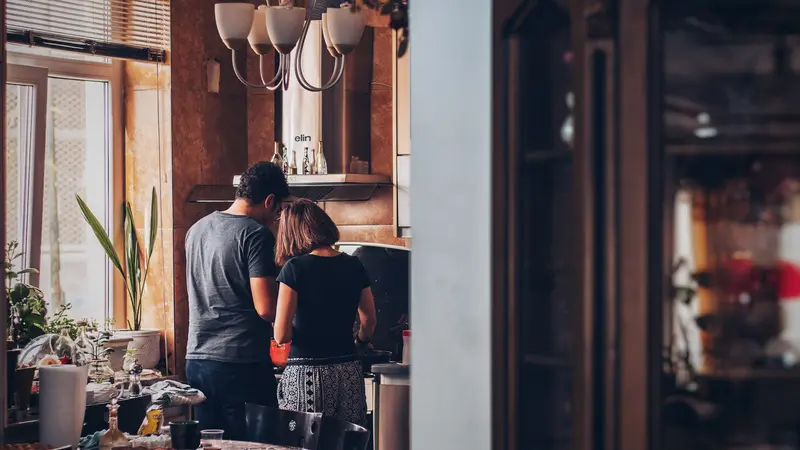Upgrading to a larger home is a significant milestone that comes with exciting opportunities and equally important challenges. Whether driven by a growing family, the desire for more luxurious amenities, or the need for a better location, making the transition to a bigger property requires detailed planning and strategic decision-making.
The move is not just about purchasing a larger space; it involves financial adjustments, lifestyle considerations, and a deep understanding of both immediate and future needs. Every detail, from budget constraints to long-term maintenance, plays a crucial role in ensuring the upgrade is a wise and fulfilling investment.
The prospect of a bigger home often brings visions of sprawling living rooms, spacious backyards, and guest accommodations. However, without proper evaluation and preparation, such a transition can become overwhelming. Understanding what to expect and plan for beforehand ensures that the new home enhances the quality of life rather than becoming a source of financial or emotional strain.
Before committing to a larger property, it is essential to address key factors that impact both the purchasing process and future living experience.
Financial Readiness: Understanding Loans, Mortgages, and Leasing Options
One of the first and most critical considerations when upgrading to a larger home is the financial commitment involved. A bigger property typically comes with a higher purchase price, increased property taxes, and more substantial maintenance costs. Therefore, evaluating current financial standing and future earning potential is essential.
For many, this means having to apply for a loan to meet the demands of the upgrade. Navigating the complexities of loan approvals requires a strong credit history, stable income, and thorough knowledge of the various mortgage products available.
In some instances, potential buyers may explore lease-to-own options, allowing them to move into the property while building equity over time. While leasing offers flexibility, it often involves higher monthly payments and specific contractual obligations. Therefore, understanding the terms thoroughly is vital to avoid unexpected financial burdens later on.
Budgeting must account not only for the purchase price but also for closing costs, insurance, property taxes, and future renovations.
Space Requirements and Future Needs
When considering an upgrade, assessing current space needs alongside anticipated future requirements is crucial. A larger home provides more room for living, but it should be tailored to specific lifestyle needs. Growing families might prioritize additional bedrooms and bathrooms, while remote workers could look for dedicated office spaces. Entertainment enthusiasts may seek larger kitchens, game rooms, or home theaters. Future needs, such as accommodating elderly parents or planning for future children, should also be factored into the decision.
Anticipating these requirements ensures the new home remains functional and relevant for many years. It is easy to be swayed by impressive square footage, but buying more space than necessary can lead to wasted resources and increased maintenance demands. Conversely, underestimating future needs might necessitate another move sooner than expected.
Location and Accessibility
Another critical element when upgrading is the location of the new home. A bigger house in an inconvenient or less desirable neighborhood can quickly lose its appeal. Factors like proximity to work, access to quality schools, healthcare facilities, shopping centers, and recreational areas play a crucial role in the long-term satisfaction with the property. Evaluating commute times, neighborhood safety, and future development plans ensures the location supports both current lifestyles and future aspirations.
Accessibility is equally important. A larger home should offer easy access to major roads, public transportation, and essential services. In areas where future urban development is expected, property values may appreciate, making the home not just a comfortable living space but also a smart investment. Location also influences social connections, availability of community activities, and overall quality of life, making it a factor that deserves careful analysis.
Home Layout and Functionality
While the total square footage is a major consideration, the layout and functionality of the home often have a more profound impact on day-to-day living. A well-designed floor plan can make even a moderately larger home feel spacious and efficient, while a poorly planned layout can render a vast space inconvenient and hard to use. Open floor plans, strategically placed bedrooms, sufficient storage areas, and multi-functional spaces contribute significantly to a home’s livability.
Assessing the usability of spaces, such as the flow between the kitchen, dining, and living areas, ensures that the home promotes comfort and convenience. Attention should also be paid to outdoor spaces like patios, decks, or gardens, which enhance lifestyle quality. Investing time in evaluating how each area will be used helps prevent costly remodeling projects later and ensures that every part of the home serves a purpose.
Long-Term Maintenance and Upkeep
Larger homes invariably demand more time, effort, and money for upkeep. From lawn care and cleaning to repairs and renovations, maintaining a bigger property can quickly become labor-intensive. Factoring in these long-term responsibilities is crucial before committing to an upgrade. Prospective homeowners should consider whether they have the resources to manage ongoing maintenance or if they will need to hire professional services, which adds to overall costs.
Understanding the age of critical systems such as plumbing, electrical wiring, roofing, and HVAC is vital during the evaluation process. Older systems may require immediate upgrades, increasing initial investment costs. Furthermore, energy consumption often increases with size, leading to higher utility bills. Ensuring the home is energy-efficient or planning for upgrades that enhance efficiency contributes to manageable long-term expenses.
Emotional and Lifestyle Adjustments
Beyond the financial and logistical considerations, upgrading to a larger home brings emotional adjustments. Settling into a new environment, adapting to different routines, and forming new social connections can take time and effort. Moving into a larger space may also come with lifestyle changes, such as taking on more household responsibilities or adjusting to different community dynamics.
It is important to consider whether the move aligns with personal values and long-term goals. A larger home should enhance happiness and well-being, not become a source of stress or isolation. Evaluating readiness for these lifestyle adjustments ensures that the move enriches life rather than complicates it. Emotional preparedness, coupled with strategic planning, forms the foundation for a successful transition.
Market Trends and Resale Value
While personal needs are the primary focus when upgrading, keeping an eye on market trends and potential resale value is a smart strategy. Buying a home that aligns with broader market demands increases the likelihood of a good return on investment should the need to sell arise in the future. Features such as energy-efficient designs, modern kitchens, smart home technology, and desirable community amenities can boost a property’s appeal.
Analyzing market cycles helps determine the best time to purchase, maximizing financial advantages. Working with a knowledgeable real estate professional who understands local market dynamics provides valuable insights that inform purchasing decisions.
Upgrading to a larger home is a thrilling yet complex endeavor that demands thoughtful preparation and clear-eyed planning. Financial readiness, space considerations, location, functionality, maintenance, emotional preparedness, and market awareness all contribute to a successful transition.




